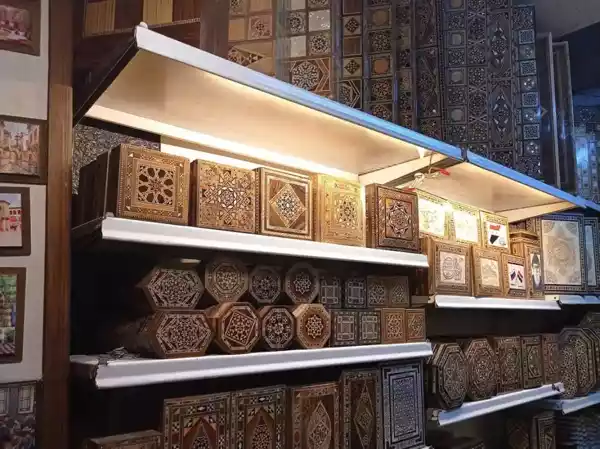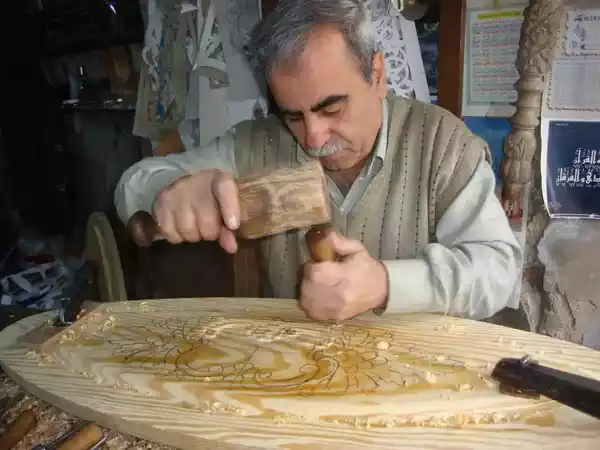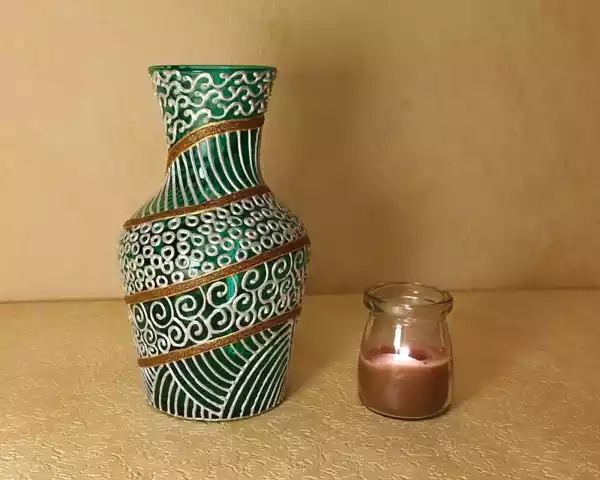Awesome Mosaic art ,handcrafted (handmade), and Damascene
Awesome Mosaic art
has been handcrafted (handmade) since ancient times, and it is Damascene.
The art of mosaic or hand mosaic and glass mosaic art is one of the oldest Syrian and Damascene crafts. He is said to be the dean of all dementia and handicraft arts, which depended on wood decoration to produce arts for display and decoration.
Experts say that mosaic is a Damascene invention that spread 500 years ago through a number of Damascene families who worked in the field of handicrafts.
more about
Mosaic art has been handcrafted (handmade) since ancient times.

Including Al Naasan. But there are those who say that the creator of this Damascene craftsman art, Georgi Bitar, about 160 years ago, and after that, it spread thanks to a group of craftsmen from the Syrian capital working in the field of decoration, some of whom specialized in mosaic art only, such as the Almaz and Qinni families and others. Their workshops were concentrated in the old Damascus neighborhoods such as Al-Amara, Al-Shahem Minaret and Al-Qaymariya. Those interested note that this art is antique, after its luster faded in the second half of the last century due to its high prices and the high cost of manufacturing. In the last ten years, it witnessed a remarkable awakening, and the number of workers in it increased, especially by young people, and even women who did not work in it for difficulty. Dealing with wood, engraving on it and decorating it.

Regarding the reason for the return of brilliance to the art of mosaics, the craftsman Youssef Al-Harstani (Abu Salim), whose shop is located in one of the Al-Hamidiyah market branches, says, “There is more than one reason for the return of mosaic art in abundance in recent years, including that work in it is no longer relied on in All of its stages are on hand, as the machine entered – for example – in preparing the wooden molds and wooden panels to be decorated with mosaics, and this helped reduce the time required to produce these pieces of art.And tomorrow there are craftsmen working in the shops of the old neighborhoods of Damascus on simple saws
They achieved their goal, providing these wood molds to craftsmen and woodworkers. Then another important reason is that many Syrian youth want to work in the professions of their ancestors so as not to lose them, and some of them studied at institutes of applied arts, and they wanted to employ what they had learned to work in this art. Therefore, we note here that girls enter the labor market, and they are often graduates of these institutes. The third reason is that working in it has become remunerative to some extent compared to other handicrafts, and it generates a good income thanks to the demand of tourists and visitors to Damascus to buy a variety of mosaic products at a good price. In addition to the above, many no longer rely on the ancient original materials, which our ancestors used in the art of mosaic, including bone material as a raw material, so they replaced it with different woods such as walnut, poplar, lemon, olive, citron, etc., and thus the costs of producing these artistic pieces of mosaic. ”
Another craftsman besides “Abu Salim”.
He introduced himself to “Abu Emad”. He commented: “Mosaic art is one of the most beautiful and oldest Damascene arts, and it depends mainly on Damascene art.”
The imagination of the craftsman in inlaying wood and transforming it into artistic forms through drawings and geometric shapes such as the octagon, square, hexagon, and triangle, and there is an Arabic calligraphy decoration. In general, we rely here on the drawings that we put in front of us and transfer them to the mosaic panel, or through the imagination of the craftsman, as with the increase in the purchase of these products in recent years, many craftsmen have created new forms to meet the desires of customers.”
Abu Imad counts the number of these shapes now at about 200, after it was previously no more than fifty, and continues: “This is an important development in these handicrafts that helped them continue and challenge extinction, as happened to some other handicrafts.” He lists the pieces that were produced using Mosaic art popular with people and tourists, ‘hospitality chests, wall clocks, backgammon – which are particularly popular with tourists. There are wealthy people, especially businessmen, who ask for it.
A complete set of mosaics for his office, which is expensive.

but still less expensive than the set made of inlay (inlaid with mother-of-pearl). There are those who decorate the walls of their living room with mosaics.. Everything has its value and cost (“Abu Emad” laughs).
The production of large pieces takes a long time, up to several months, and therefore its cost is high.” Regarding the stages and types of mosaic work, Abu Imad says, explaining: “We are talking here about the Damascene decoration known as inscription, Arabic, forests, and satin, all of which belong to the ancient art of mosaics. To produce a mosaic box, it is necessary to go through the following stages: After receiving the wooden pieces, the manual stages start manufacturing, which is a delicate matter and requires patience and length on the part of the craftsman, as well as skill and mastery. On the wooden case with red glue and leave it for two or three days until the star dries, to continue working on the other stars.Therefore, we have the required geometry.The colors that appear in the mosaic,the color is related to the type of wood and the pigments we use on it.There are lemon yellow,red rosewood and colored walnut With black, striped olives, and white peel.”
With the demand for mosaic by hand, in the past 10 years, another related profession is the restoration of mosaic products. A number of Damascene craftsmen and youth specialized in it, some of whom inherited the mosaic profession from his family.
but because of his skill in dealing with these handicrafts, his work was limited to restoring ancient pieces, including Samir Bitar, who said: “The restoration process is much more difficult than the manufacturing process.” We usually deal with mosaics that are more than a hundred years old, because those who ask for mosaic restoration are usually the owners of the old pieces, while the new ones – especially the cheap ones – no one cares to restore them



